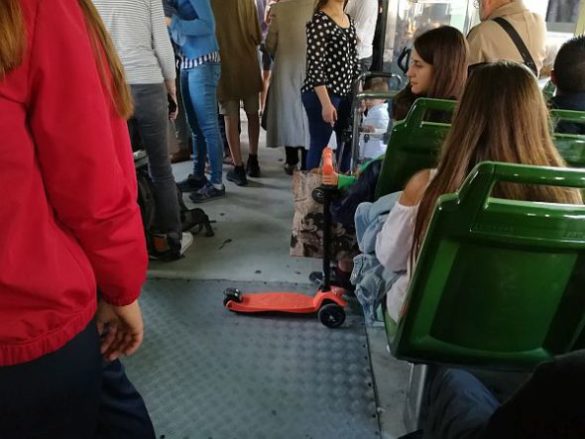Because I am, as usual, spinning in circles at the last minute with everything still to do, I am making the most of my blog to wish all my readers and subscribers the happiest holidays and the best New Year ever!
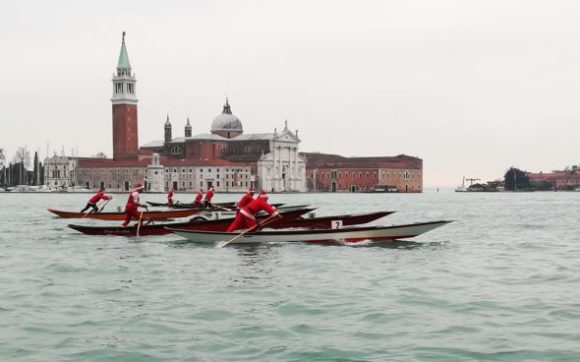
Because I am, as usual, spinning in circles at the last minute with everything still to do, I am making the most of my blog to wish all my readers and subscribers the happiest holidays and the best New Year ever!

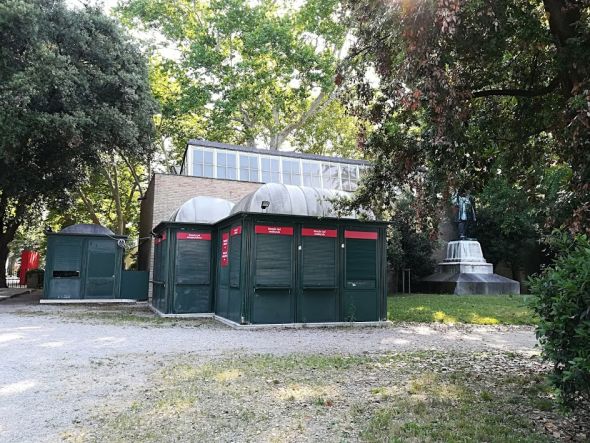
Sharp-eyed readers, no matter how well-read, probably wouldn’t associate “Modena” (MOH-deh-na) with a man, but rather with the city which is the fountainhead of balsamic vinegar. A slightly curious last name, for someone born in Venice, but there’s a man in Modena with the last name “Venezia.” Seems fair.
Gustavo Modena (1803 – 1861) appears by now to have been consigned to corners — of libraries, of artistic and political discussions, and even of the Giardini Pubblici in Venice. But he was front and center in Italian artistic and political life in the mid-1800s — arguably the premier Italian actor of the 19th century — and active in the secret revolutionary society known as the “carbonari” which was a driving force in the efforts to unify Italy. When he wasn’t acting, he was being followed by the police. Clearly, activist-actors aren’t a recent phenomenon and he was equally amazing in both roles (sorry).
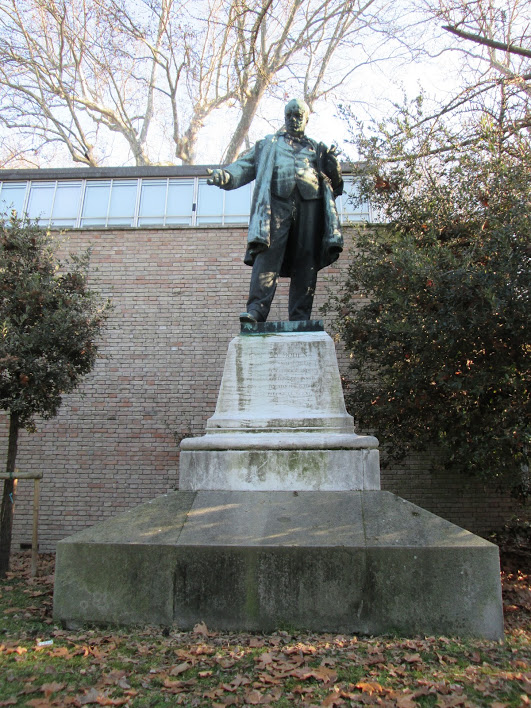
“Like so much else in the arts,” the Cambridge Guide to Theatre tells us, “the early 19th-century Italian theatre was dominated by the struggle for national independence and unification, all the more fuelled by the sentiments of the romantic movement which in Italy was a revolt not only against French-oriented classicism, but against foreign domination, political fragmentation, economic retardation, and intellectual obscurantism. More, perhaps, than elsewhere, romanticism too had strong nationalist and popular emphases.”
There is no way for us to experience his acting, unhappily for us, though contemporary reports state that it was powerful and highly naturalistic. His writings may have been equally eloquent, but when read today can’t possibly evoke the same responses as they did when Italy was in turmoil. However effective he may have been in his lifetime, only faint reverberations, if any, reach us today. I have no reason to doubt commentators who state that he achieved “strepitosi successi” — sensational successes — on the stage, but we can’t feel them. The statue looks earnest, nothing more.
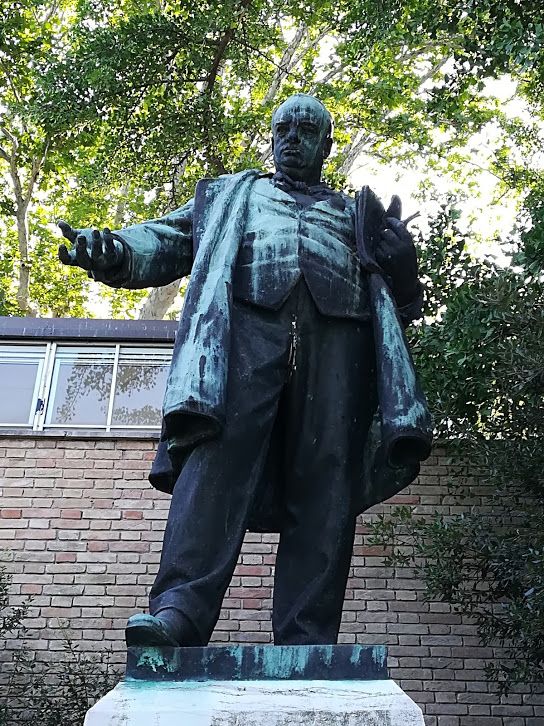
As for his fervent and unceasing labors to liberate his countrymen from their assorted overlords, I don’t presume to recount all his adventures, because I don’t presume you’d be inclined to read them. That whole historical period requires concentration.
But he isn’t completely forgotten. There are theatres named for him, as well as streets –“via Gustavo Modena”s are scattered across Italy: Rome, Milan, Padua, Florence, Bologna, Treviso, Perugia, Vigonza, and of course in Mori, his father’s home town near Trento. It’s great that he is so honored; it’s just too bad that he now seems as distant as Pharaoh Sneferka of the First Dynasty.
In Venice, though, he’ll always have that plinth.
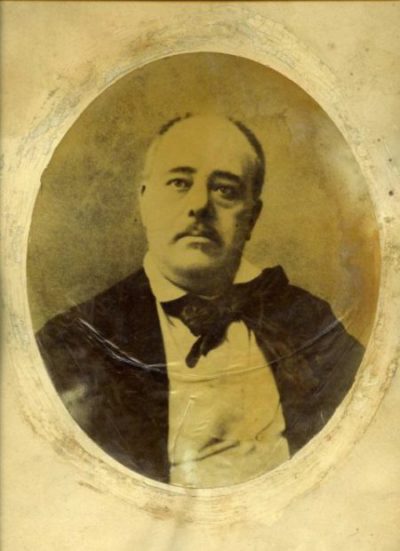
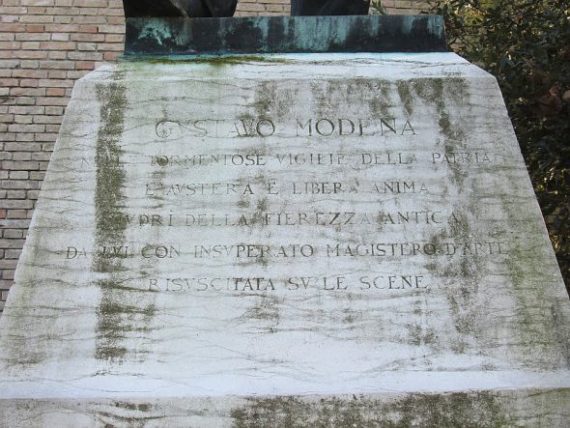


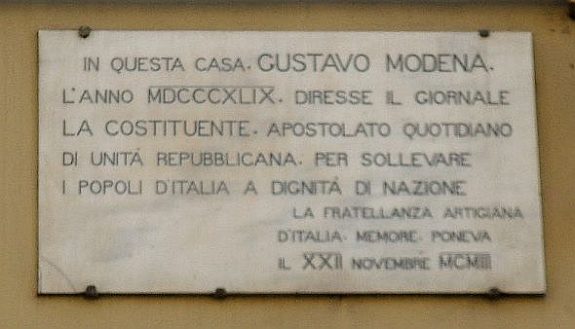
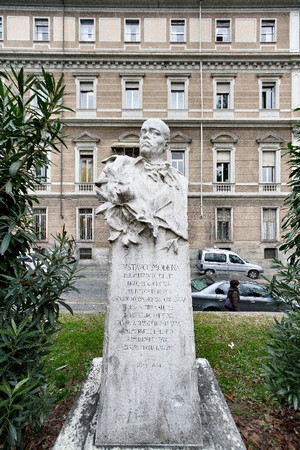
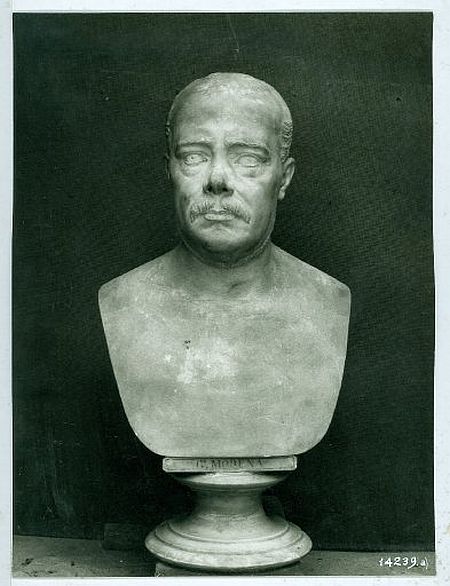
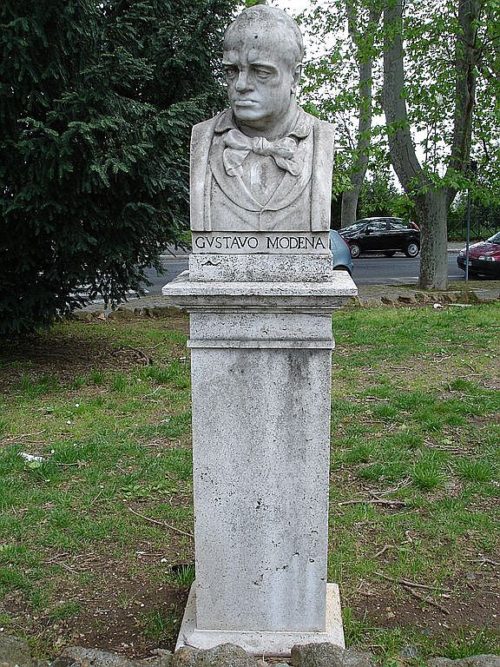
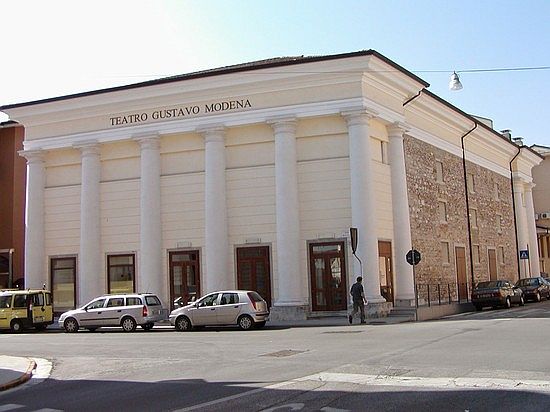
All these monuments in his honor — not bad for a man hardly anyone remembers anymore.
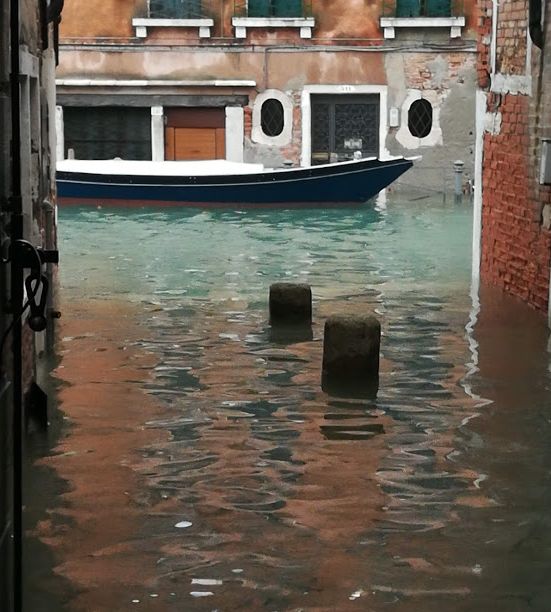
On October 29, 2018, there was water on plenty of floors. The tide wouldn’t have been all that high if the waning moon had been in charge of the weather, but the wind took over, reaching gusts of some 70 km/h (45 mph). The scirocco, or southeast wind, was what really brought the water home.
The media was flooded (sorry) with dramatic images of not one, but two “exceptional” high tides. “Exceptional” is the official term for any height over 140 cm above mean sea level (we got 156 cm at about 3:00 PM, 148 cm at about 11:00 PM). And, as Lino and I know from our experience ten years ago, 150 cm is the limit of the top step leading into our apartment. Therefore we had already gotten busy preparing our humble dwelling for this uninvited guest.
So the water came in but, in the time-honored way of the tide, it also went out. And I — along with everybody in the city at street level — can tell you that while “water on the ground” (as the common phrase here expresses it when the quantities of water are more modest) provides dramatic photos, water on the floor is tiring. Everybody’s next day was dedicated to cleaning up. Which is also tiring.
Because many friends have so kindly asked how we are (or, by this time, how we were), here is a little chronicle of the event as we lived it. There aren’t many pictures of the water outside our house because, as you’ll see, we had plenty to take care of inside.
It wasn’t fun, and of course it created major problems for vaporettos, ambulances, and other necessary boats which wouldn’t have been able to pass under the bridges. But the water here wasn’t anything like the monstrous flooding of the rivers devastating the Veneto region, where epic rain had filled some rivers, such as the Piave, up to 30 feet above their normal height. Bridges overwhelmed, roads completely impassable, houses drowned up to their second-story windows. Unlike high tide, flooding rivers kill people, so no wailing from us. Our water meant I had to dust and wash things I certainly had no interest in dusting or washing, but everything is back to normal for us. Out in the countryside, they can’t even see “normal” on the horizon yet.

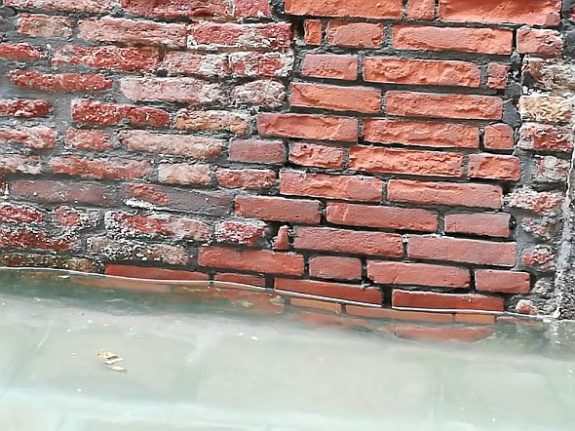
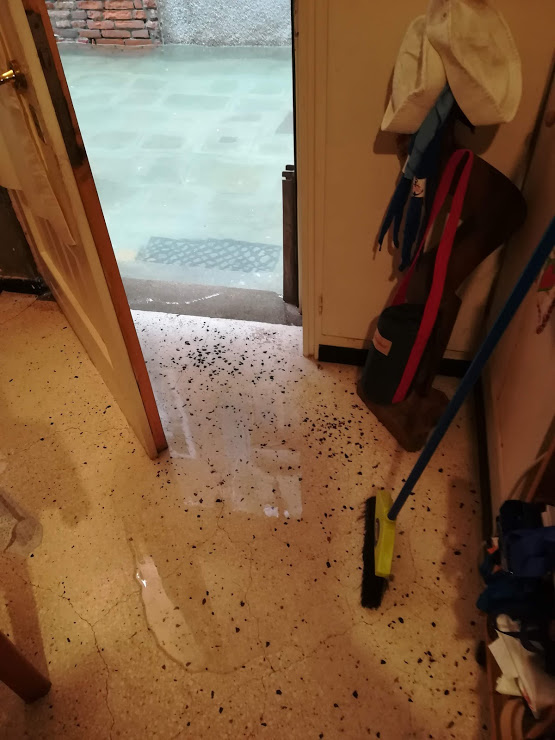
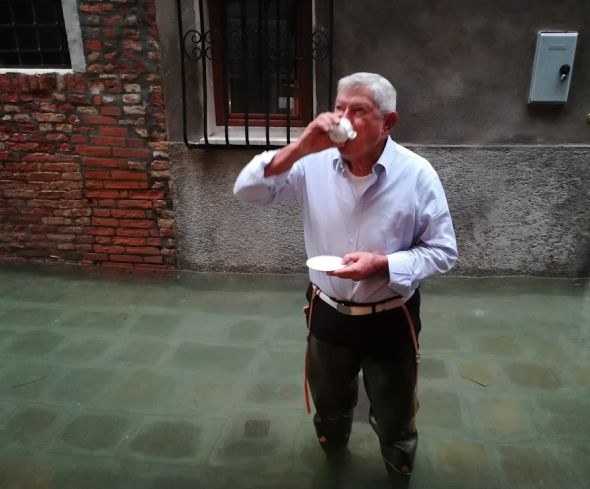
The next morning, I had some errands to do on via Garibaldi. As I expected, what I saw wasn’t a scene of destruction and lamentation but universal enforced housecleaning. The Venetian bucket brigade, with mops.
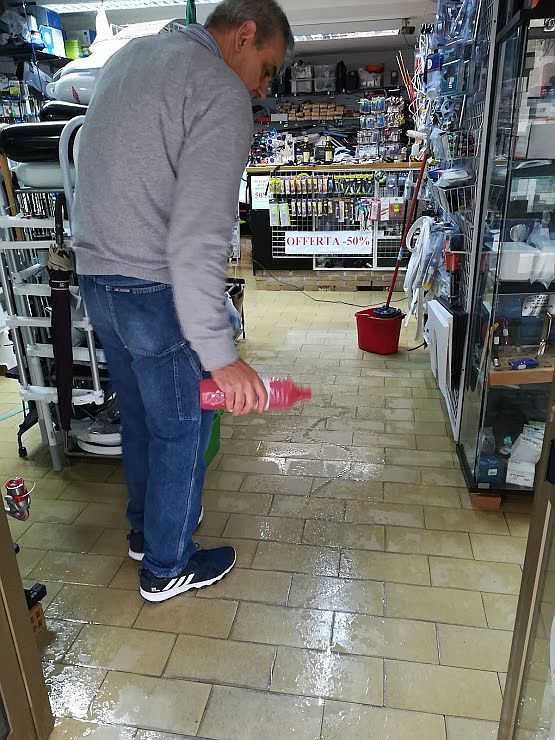
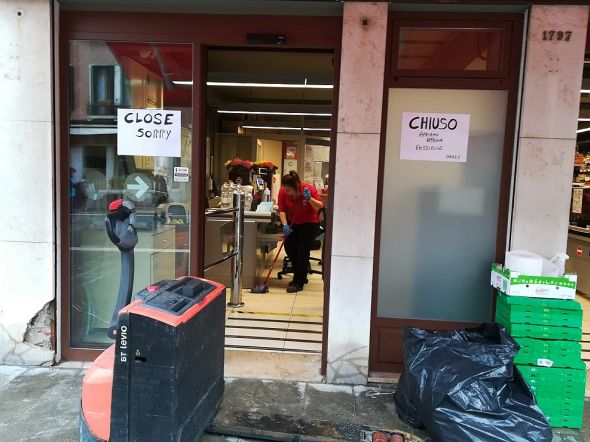

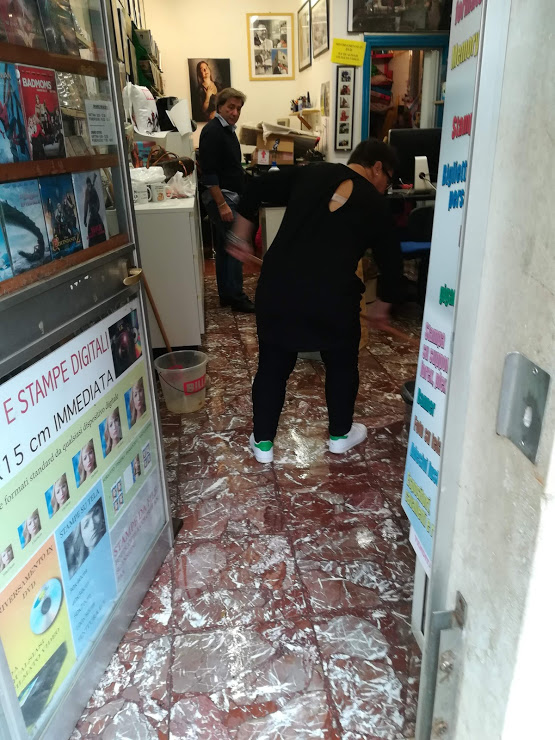
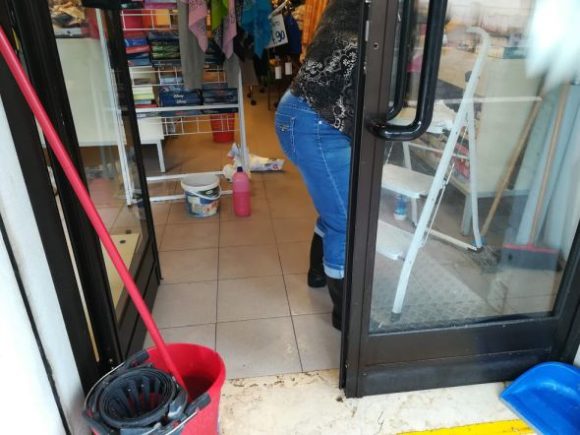
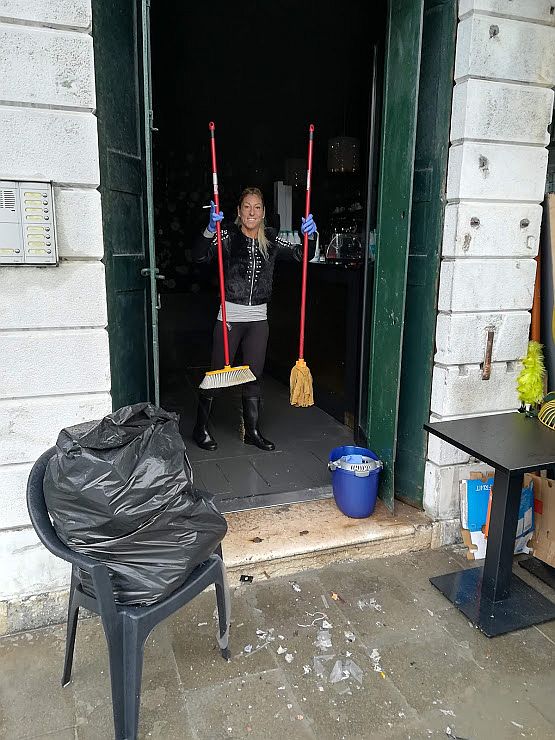
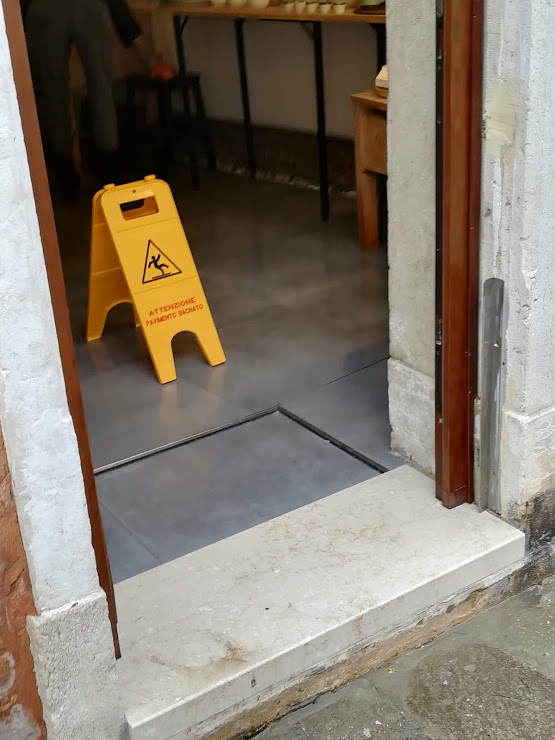
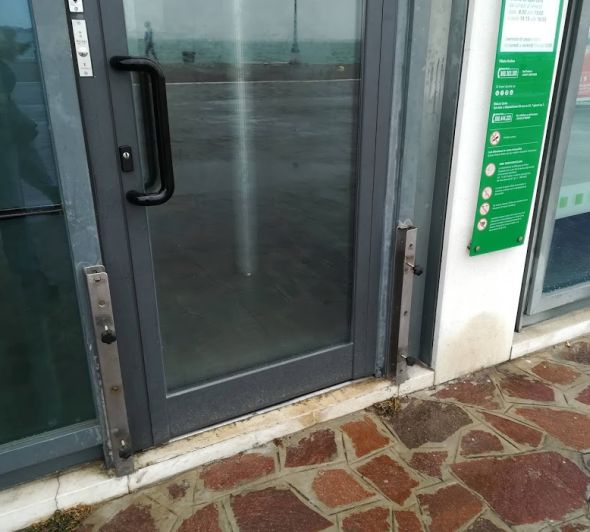

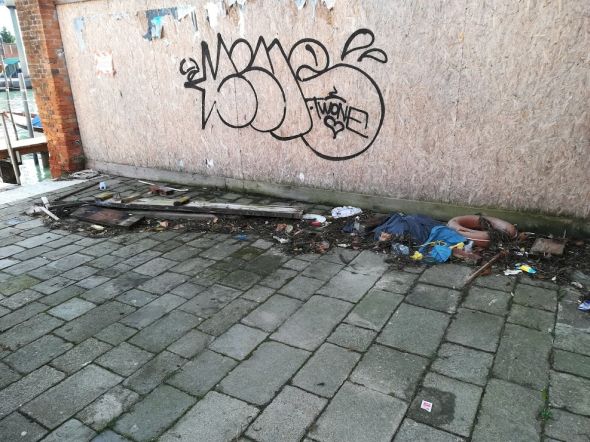
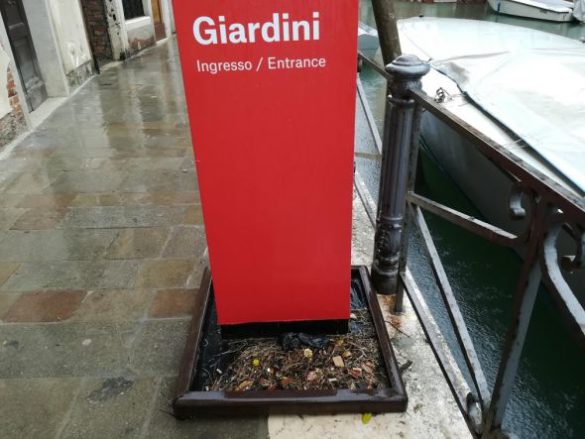
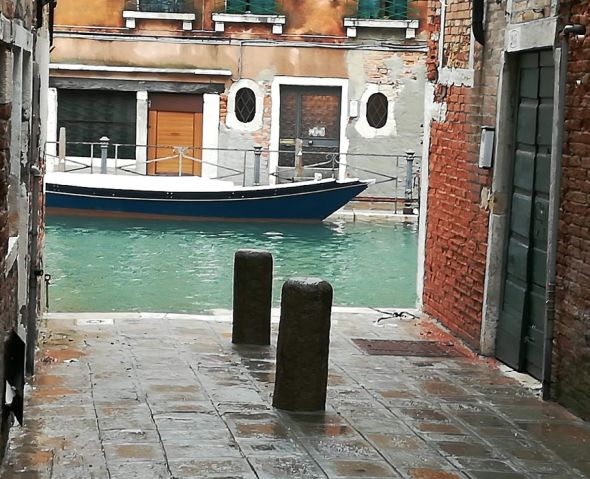

We complain — justifiably — about tourists who take up too much space on the vaporettos with their steamer trunks and expedition backpacks, though I have to say that Venetians with children in strollers the size of tanks is becoming an even more annoying, and even dangerous, problem.
But the other day I encountered a new twist on the “I’m here, deal with it” mentality as evidenced by an exhausted Venetian mother. (Perhaps “exhausted mother” is redundant.) In any case, she was evidently in “standby” mode, mentally speaking. But she was sufficiently alert to have offered me her seat as I passed by, which surprised me.
She wasn’t sufficiently alert, though, to register that she wasn’t at home in her living room, where clearly chaos reigns. I sympathize with that, considering that her little boy, sitting on her lap, appeared to be about two years old. The fountainhead and source of chaos, in other words.
But I am helpless to further interpret her spatial awareness. So I will say no more.
